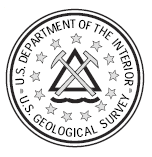Volcano and Earthquake Hazards in the Crater Lake Region, Oregon
Glossary
andesite—magma containing about 57 to 63 percent SiO2; intermediate in eruptive characteristics between basaltic and silica-rich magma.
ash—(volcanic) sand-sized or finer tephra; fragments are smaller than 2 mm (0.08 in) in diameter.
ballistics, ballistic blocks—rock fragments explosively ejected from the vent on a ballistic arc.
basalt—low-silica magma (containing about 45 to 57 percent SiO2), which is the hottest and least viscous.
caldera—a large, basin-shaped volcanic depression, more or less circular in form, with a diameter generally greater than 1 to 2 km (a mile or more).
cinder cone—a conical hill formed by accumulation of solidified bubble-rich droplets and clots of lava that fall around the vent during a single basaltic to andesitic eruption.
climactic eruption—(Crater Lake) the catastrophic, highly explosive eruption of Mount Mazama about 7,700 years ago during which Crater Lake caldera collapsed.
composite volcano—volcanic edifice formed by accumulation of lava and fragmental volcanic material from repeated eruptions from a central vent or closely spaced vents; commonly forms a high, steep-sided, volcanic cone which may be referred to as a stratovolcano.
dacite—(Crater Lake) silica-rich magma containing 63 to 68 percent SiO2; see also silicic magma.
dome—volcanic domes are masses of solid rock that are formed when viscous lava is erupted slowly from a vent and piles up over it. The sides of most domes are very steep and typically are mantled with unstable rock debris formed during or shortly after dome emplacement.
hydromagmatic—said of an explosive eruption caused by heating of water by magma or by physical mixing of magma and water.
lahar—a watery flow of volcanic rocks and mud that surges downstream like rapidly flowing concrete; also called mudflow or debris flow.
K–Ar dating—the potassium (K) – argon (Ar) method of radiometric data of rocks and minerals. The radioactive isotope of potassium (40K) decays to stable argon (40Ar) at a known rate. Measurement of the amounts of K and radiogenic 40Ar present in a rock or mineral specimen allows calculation of the elapsed time since the material was sealed to Ar loss. For unaltered volcanic rocks, the time since crystallization of the magma is determined.
magma—molten rock, which may also contain suspended crystals and(or) gas bubbles; forms lava or tephra upon eruption at the Earth’s surface.
magma chamber—a reservoir of magma beneath the Earth’s surface.
monogenetic volcano—a volcano built up by a single eruption or series of like eruptions closely spaced in time.
paleomagnetic studies—investigations of the orientation and (or) intensity of the Earth’s magnetic field in the past, as recorded in geologic materials. The magnetic poles wander about the Earth’s axis of rotation and the paleomagnetic pole position at the time of cooling of a volcanic rock is “frozen in” by magnetic minerals. An empirical calibration of this “secular variation” over time allows eruption ages to be constrained and isolated outcrops to be correlatred with one another.
plinian eruption—an explosive eruption in which a steady, turbulent stream of fragmented magma and magmatic gas is released at high velocity from a vent producing a towering eruption column that rises buoyantly into the atmosphere.
postcaldera eruption—volcanic eruption occurring after caldera formation.
preclimactic eruption—(Crater Lake) volcanic eruption of rhyodacite occurring in the approximately 20,000 years before the climactic eruption of Mount Mazama.
pyroclastic flow—dense, hot mixture of volcanic rock fragments (pyroclasts) and gases that, driven by gravity, flows down a volcano’s flank at high speed.
pyroclastic surge—turbulent, relatively low-density mixture of gas and rock fragments that, driven by gravity, flows above the ground surface at high speed.
regional volcanism—(Cascades) volcanic activity represented by widespread, generally basaltic to andesitic monogenetic volcanoes, including cinder cones and shield volcanoes, forming a background for the larger centers of the Cascades (composite volcanoes).
rhyodacite—(Crater Lake) silica-rich magma containing 68 to 72 percent SiO2; see alsosilicic magma.
shield volcano—a broad, gently sloping mound composed of numerous overlapping and superimposed lava flows; resembles the shape of a warrior’s shield or an inverted shallow bowl; typically basaltic in Cascades but may be andesite.
silicic magma—magma that contains more than 63 percent SiO2 and is generally the most viscous and gas-rich; includes dacite, rhyodacite, and rhyolite (the last not present at Crater Lake).
tectonic earthquake—an earthquake caused by sudden slip on a fault rather than by subsurface movement of magma or a volcanic eruption.
tephra—collectively, all fragmental rock material, including magma, ejected during a volcanic explosion or eruption.
vent—the opening at the Earth’s surface through which volcanic materials are ejected.
***previous*** — ***next***


